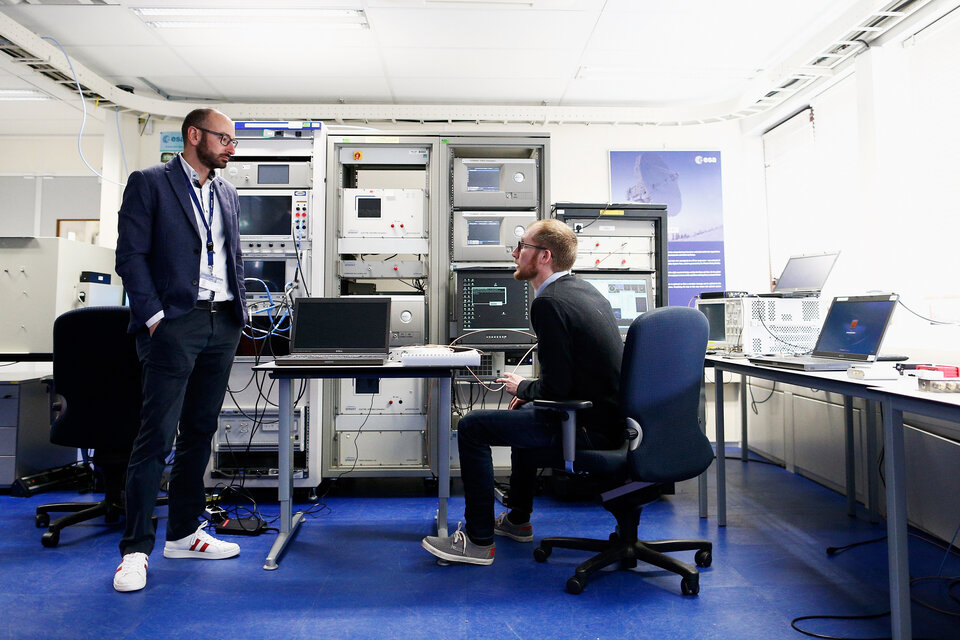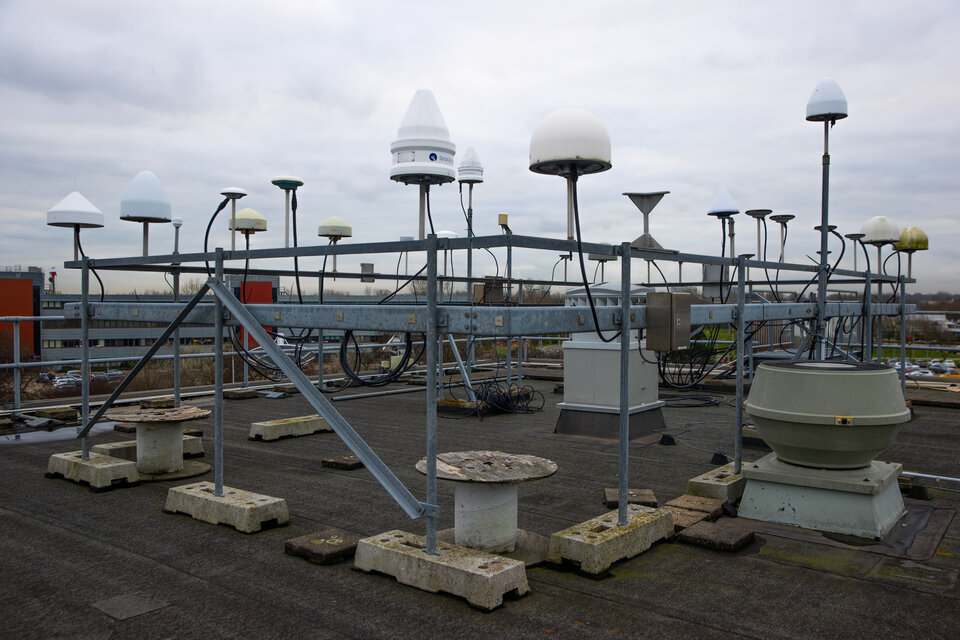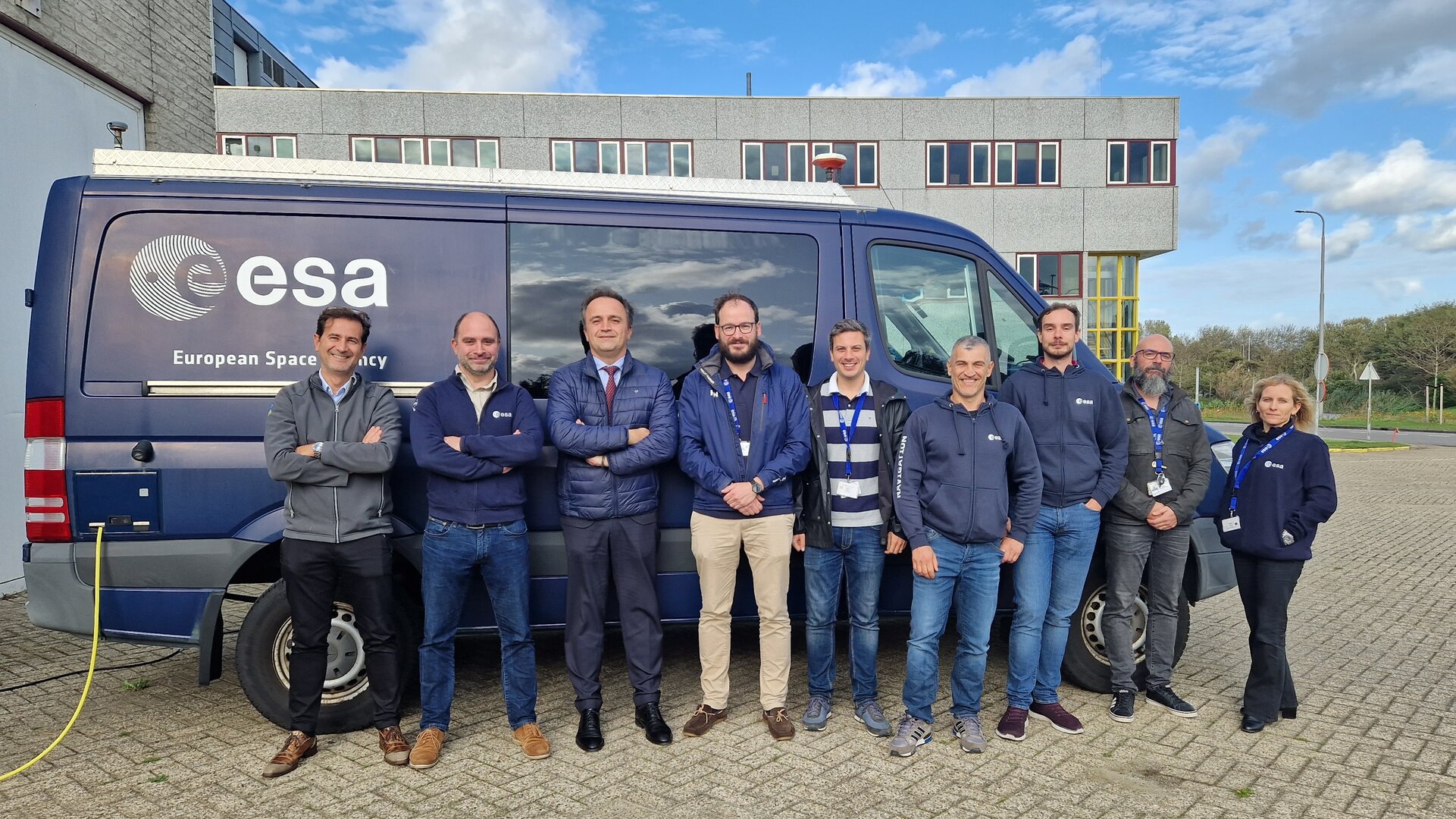New instruments for Galileo’s tomorrow
Galileo Second Generation is on the way with new and enhanced navigation satellites that will offer novel signals, services and even more precise positioning. But all the work being done to make it happen hinges on this single item at ESA’s Navigation Laboratory at ESTEC. The G2 test user receiver is designed to quantify the improvements the Second Generation will bring compared to current satellite navigation systems and will be used to verify the performance of early receivers processing the first G2 signals in space.
Today, with 28 satellites in orbit, Galileo is the world’s most precise satellite navigation system, providing metre-level accuracy to more than four billion users around the globe. There are currently 10 further Galileo satellites ready to be launched, after which the first of the Galileo Second Generation (G2) satellites are expected to start joining the constellation.
“In the end, everything we design has the goal of benefiting users,” explains Jose Antonio Garcia Molina, heading ESA’s Radio Navigation Systems and Techniques Section and leading the G2 signal-in-space design at ESA. “So, what we need to do before G2 satellites are ready to offer their novel services is to confirm that the system and signals we develop will indeed deliver their expected benefits.” This is the job of the test receiver which can capture and process all G2 services and signals-in-space for civilian use.
Two test receivers for G2 have been designed through parallel contracts: one by GMV in Madrid and the other one by Airbus Defence and Space in Munich. The devices have been installed in ESA’s Navigation Laboratory at ESTEC, in the Netherlands.

For the time being, the receiver will be working solely with simulated signals produced by the G2 constellation simulators, two devices currently being developed by GMV/Orolia and Airbus/Ifen. At a later stage the receivers will be used with actual satellite signals during radio frequency and system compatibility tests, performed in advance of the satellite launches. It will also be employed for in-orbit testing and for the first in-orbit validation position fixes, similar to the first G1 position fix 10 years ago.
“One of the reasons the G2 test user receiver is so valuable is its flexibility,” explains Enik Shytermeja, technology development engineer at ESA, “it can reproduce the performance of different types of receivers in various simulated environments”. ESA radionavigation engineer Francesca Zanier offers examples: “We can check how basic single-frequency smartphones will work with G2 signals both in optimal conditions and in more challenging situations, such as in built-up urban canyons. We can also simulate automotive receivers, sophisticated multi-frequency receivers used for surveying and low-end Internet of Things receivers with strict processing and power limitations”.
Ever-evolving excellence

The novel receiver is being used to assess new signals and services that would be layered on top of the legacy Galileo ones as part of the system’s evolution, like the so-called Quasi-Pilot and Data Signal that are to be introduced with Galileo’s Second Generation, following initial positive test phase on Galileo’s First Generation. “Galileo already delivers the most precise positioning service in the world,” explains ESA’s Head of G2 System Engineering Unit Gustavo Lopez, “but we are always striving to make it even better”.
The Quasi-Pilot service will enable faster positioning on basic receivers such as the ones in smartphones and Internet of Things devices by transmitting a simpler signal that requires less calculation. Data Signal will also enable a faster time-to-first-fix, even for users in urban environments and without Internet connection, by having each satellite transmit data from multiple satellites.
Quasi-Pilot and Data Signal will complement each other to provide maximum flexibility for future services, according to ESA’s Galileo Second Generation Project Manager Miguel Manteiga Bautista, who is convinced that the population worldwide will greatly benefit from their combination.
About Galileo
Galileo is currently the world’s most precise satellite navigation system, serving close to four billion users around the globe since entering Open Service in 2017. All smartphones sold in the European Single Market are now guaranteed Galileo-enabled. In addition, Galileo is making a difference across the fields of rail, maritime, agriculture, financial timing services and rescue operations.
Galileo is a flagship programme of the European Union, managed and funded by the European Commission. Since its inception, ESA leads the design, development and qualification of the space and ground systems, as well as procuring launches. The EU Agency for the Space Programme (EUSPA) acts as the service provider of Galileo, overseeing the market and application needs and closing the loop with users.
For more info about Galileo: https://www.usegalileo.eu/EN/


